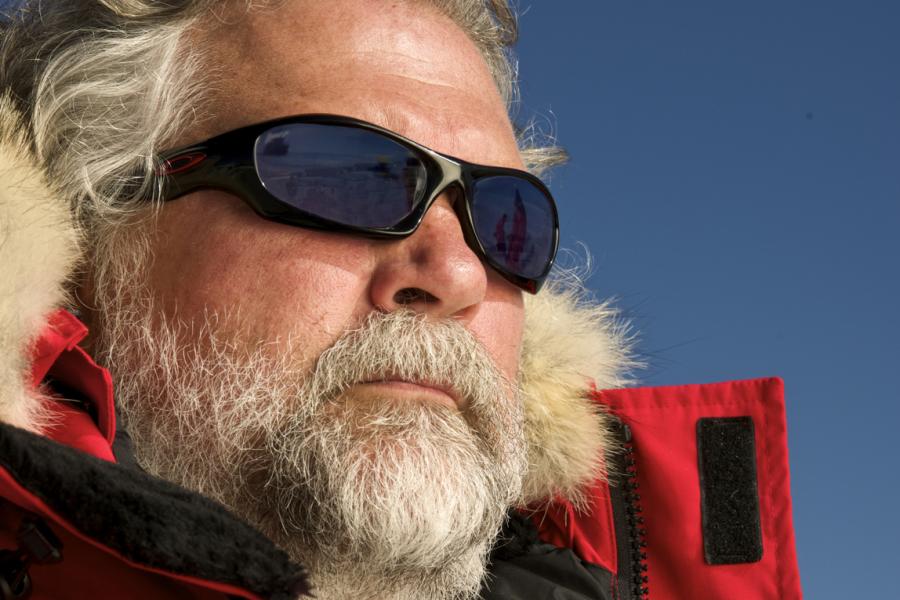
Distinguished Professor
Department of Environment and Geography
Scientific Director, Centre for Earth Observation Science
Canada Research Chair (Tier 1) in Arctic System Science
Associate Dean (Research), Clayton H. Riddell Faculty of Environment, Earth, & Resources
576 Wallace Building
University of Manitoba
Winnipeg MB
R3T 2N2
204-474-6981
david.barber@umanitoba.ca
Academic Background
Ph.D. University of Waterloo (1992) - Geography
M.N.R.M University of Manitoba (1988) - Geography
B.P.E. University of Manitoba (1982)
Research Interests
My research interests focus on Arctic System Science, with my program coordinated around three interconnected themes:
- The causes of climate change in both dynamic and thermodynamic processes of sea ice due to climate forcing;
- The consequences of these changes on biological and geochemical systems; and
- Techniques required to improve our ability to assess both the causes and consequences of these changes.
Presently I am focused on freshwater-marine coupling in Hudson Bay and the role that freshwater plays on both sea ice thermodynamic and dynamic processes. I use a variety of techniques to collect data, including the installation of oceanographic moorings, physical sampling of various sea ice types and utilize remote sensing platforms (passive and active sensors) during my field-based campaigns. Results from the data collection are often inputted into models to uncover the connections between the ocean-sea ice-atmosphere processes in the Arctic. In addition, I am working on determining the interactions of oil in sea ice-covered environments by using remote sensing techniques to evaluate the impacts of oil on the geophysical and thermodynamic process of various sea ice types. The results of this analysis will be used to understand the potential use of genomics to biodegrade oil spills in Arctic environments
Recent and Significant Publications
Babb, D.G., J.C. Landy, J.V. Lukovich, C. Haas, S. Hendricks, D.G. Barber & R.J. Galley (2020). The 2017 reversal of the Beaufort Gyre: Can dynamic thickening of a seasonal ice cover during a reversal limit summer ice melt in the Beaufort Sea? JGR Oceans, 125(12)
Harasyn, M.L., D. Isleifson, W. Chan, & D.G. Barber (2020). Multi-scale observations of the co-evolution of sea ice thermophysical properties and microwave brightness temperatures during the summer melt period in Hudson Bay, Elemental: Science of the Anthropocene, 8(1)
Gerland, S., D.G. Barber, W. Meier, C.J. Mundy, M. Holland, S. Kern, Z. Li, C. Michel, D.K. Perovich, & T. Tamura (2019). Essential gaps and uncertainties in the understanding of the roles and function of Arctic sea ice, Environmental Research Letters, 14(4)
Barber, D.G., D.G. Babb, J.K. Ehn, W. Chan, L. Matthes, L.A. Dalman, Y. Campbell, M.L. Harasyn, N. Firoozy, N. Theriault, J.V. Lukovich, T. Zagon, T. Papakyriakou, D. Capelle, A. Forest, and A. Gariepy (2018). Increasing mobility in high arctic sea ice increases marine hazards off the east coast of Newfoundland, Geophysical Research Letters, 45(5), 2370-2379
Barber, D.G., W. Meier, S. Gerland, & C.J. Mundy (2017). Arctic Sea Ice. In: Snow, Water, Ice and Permafrost Assessment (SWIPA) 2017. Arctic Monitoring and Assessment Programme (AMAP), Oslo, Norway. ISBN-13 978-82-7971-101-
